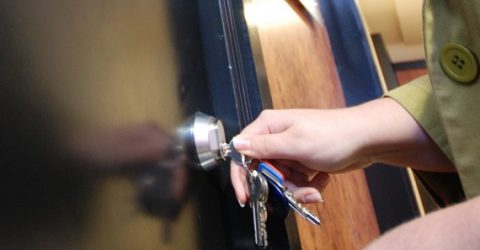Is your smart home secure?

Have you connected your home to the Internet of Things yet?
If you have smart devices like doorbells that let you see who’s calling via a smartphone app, or a heating system that knows when to adjust its own temperature, the answer is ‘yes’.
The Internet of Things (or IoT) describes devices that connect to the internet, but it often additionally refers to smart devices that communicate with each other.
Today’s smart devices are often used to make life easier and more convenient. You might ask Siri or Alexa to change your lighting, or install sensors which trigger heating and security systems.
As the Internet of Things becomes more complex, and encompasses more devices, many people are using it to make their daily lives easier.
In a few years’ time, we’ll probably have fridges that know when we are running out of food and order new supplies online, cars that text us when it’s time to get petrol, and so on.
All of this paves the way to an easier life – but what are the risks?
How connected should we be?
There is potential danger when anything connects to the internet, or to another online device like a smartphone.
Toy manufacturer VTech discovered this a few years ago, when its products were hacked to steal data on parents and children.
It can be difficult to know exactly what data is stored by the company supplying your smart device, or how and where they keep it.
And carelessly-controlled data is a gift to cyber-criminals.
If they steal your details for just one account or device, they have several options.
They can use your credentials to hack other accounts such as email and online banking, running up debts in your name or taking control of smart devices around the home.
This latter activity is alarmingly easy. Control of just one smart household device might give criminals the run of your home.
This problem has arisen because the devices that form the Internet of Things use a range of standards and protocols, not all of which are secure.
So with the IoT still in its infancy, is there any way to enjoy a smarter home with less risk?
Reducing the risk
There are steps you can take to increase safety when using the IoT.
The first is to purchase smart appliances and accessories from well-known companies. These brands tend to have higher security standards, ensuring security problems are discovered and fixed quickly.
You need to observe basic IT hygiene, too. Your WiFi router must be secured, and you should never use passwords or login credentials for more than one account.
You should regularly update the software on IoT devices. Don’t rely on the device’s manufacturer to alert you of a security update; take control of your own security.
Look for any tell-tale signs of trouble, such as unusual IP addresses in file logs or a smart device that starts behaving oddly.
Finally, don’t assume that all e-mails claiming to come from your device manufacturer genuinely do.
Mostly harmless
But most of all, don’t panic. The Internet of Things is still developing; shared standards, protocols and awareness of security issues are evolving quickly.
Connected smart devices will unquestionably transform our lives for the better. The IoT has huge potential for good, which undoubtedly trumps the security issues.
In the meantime, it’s sensible to take precautions with web-enabled devices.






